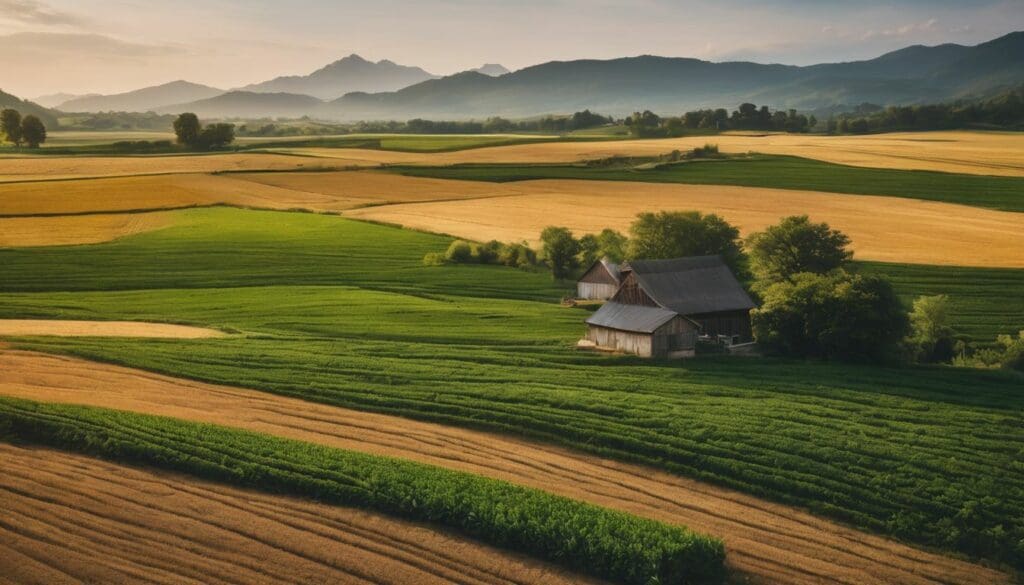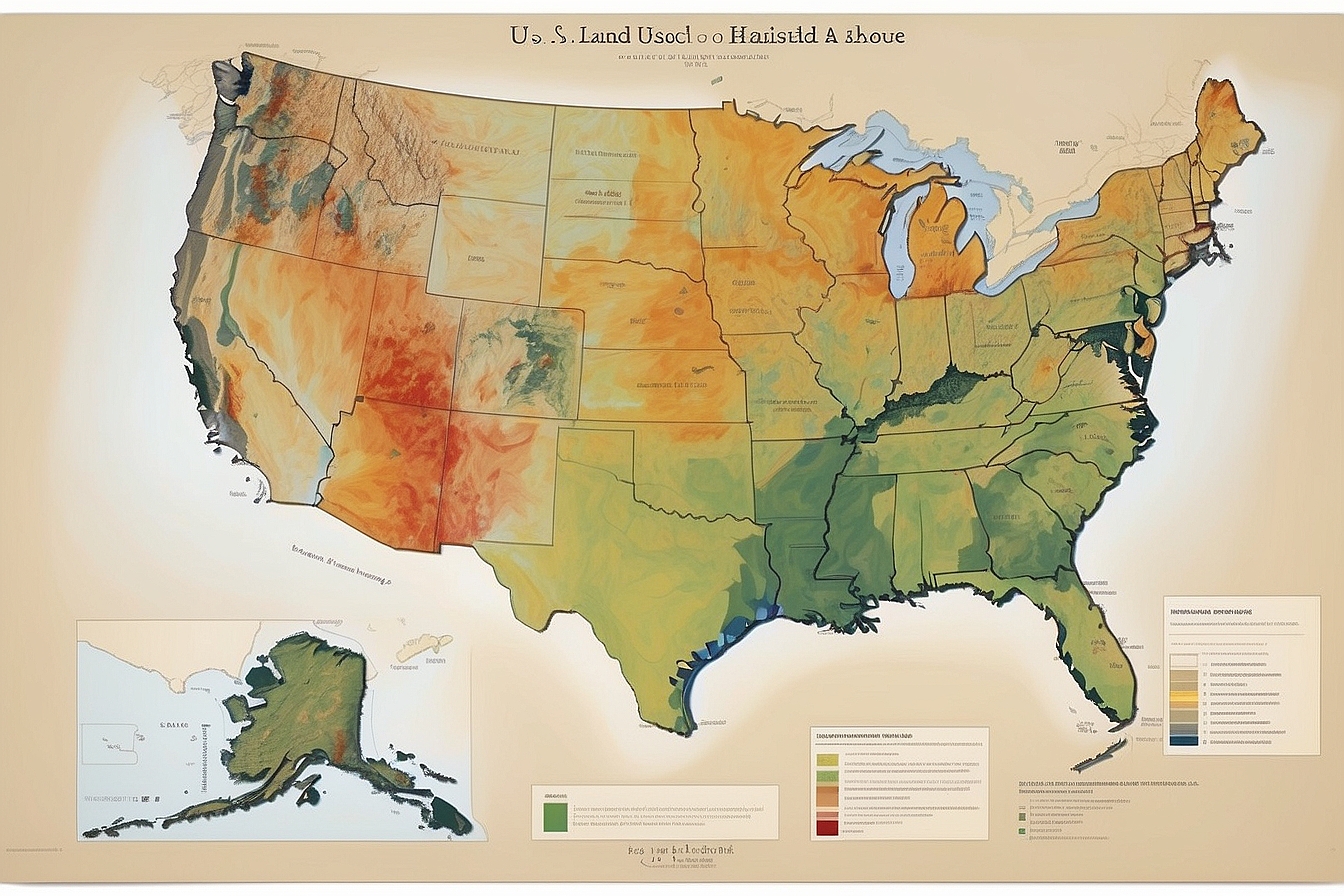Food shortages and hunger are pressing concerns that touch us all in today’s society. Much like you, I’ve witnessed these escalating problems with my own eyes, aware that almost a third of people around the world grapple with food insecurity.
This piece explores practical approaches to enhancing land use to bolster our food supply. Do keep reading; together we shall sow the seeds for solutions!
Key Takeaways
- Land degradation, including soil erosion and water scarcity, directly hampers the ability to produce enough food for global needs.
- Conflict, climate change, and the COVID – 19 pandemic are significant drivers of the food crisis by disrupting farming activities and supply chains.
- Open trade policies can alleviate food shortages by allowing surplus supplies to reach areas facing hunger more efficiently.
- Investments in local agriculture boost community resilience, enhance sustainability, and support economic growth through access to fresh, locally-produced food.
- Addressing restrictive food trade barriers is key to stabilising global food prices and improving accessibility to a diverse range of foods.
The Global Food Crisis
The global food crisis is the result of various factors such as conflict, climate change, and the ongoing COVID-19 pandemic. These issues have led to an increase in hunger and famine around the world, creating a significant impact on food production and supply.
Causes of hunger and famine
We know that land plays a crucial role in the global food crisis. As environmentally conscious individuals, we must understand the factors that lead to hunger and famine.
- Many regions suffer from severe land degradation, which directly affects food production. Soil erosion, nutrient depletion, and water scarcity undermine agricultural land’s ability to provide sufficient crops.
- Conflict often leads to displaced communities, severed food supply chains, and destroyed agricultural resources. This disruption can quickly spiral into food shortages for large populations.
- Climate shocks such as droughts, floods, and unpredictable weather patterns wreak havoc on farming cycles. These disturbances make food production less reliable and can dramatically reduce agriculture yields.
- Poverty traps farmers in a cycle where they cannot invest in better methods or materials like fertilisers and improved seeds. Consequently, they struggle to increase their yield to meet growing food demand.
- In some areas, unequal land rights restrict smallholder farmers’ access to land. Without security of tenure, these farmers have limited motivation to improve the land and enhance its productivity.
- Food trade restrictions imposed by governments hinder the distribution of surplus food to regions experiencing famine or food scarcity. This can exacerbate local shortages and lead to escalating prices.
- The aftermath of COVID has impacted global supply chains and labour forces within agriculture sectors. Disruptions caused by lockdowns and illness reduce the capacity for both food production and distribution.
Impact of conflict, climate change, and COVID-19
Conflict, climate change, and COVID-19 have significantly exacerbated the global food crisis. Conflict disrupts agriculture, displaces farmers, and hinders access to crucial resources.
Additionally, climate change alters weather patterns, leading to extreme events such as droughts and floods that devastate crops. The pandemic has further disrupted supply chains and access to markets for smallholder farmers worldwide.
These challenges are interconnected and exacerbate one another, creating a complex web of food insecurity across the globe. Addressing these issues requires comprehensive strategies that consider the multifaceted nature of the problem.
Solutions to the Global Food Crisis
We can address the global food crisis by promoting open trade, investing in local agriculture, and addressing food trade restrictions. These solutions can help ensure that everyone has access to the nutritious and sustainable food they need.
Open trade
Open trade allows for the free flow of food across borders, ensuring that regions facing food shortages can access the necessary supplies. It promotes market competition, driving down prices and making food more affordable for those in need.
By removing barriers to international trade, such as tariffs and quotas, countries can better respond to fluctuating demand while reducing the risk of scarcity.
Supporting open trade helps create a more resilient global food system that is better equipped to address hunger crises. When nations engage in open trade, they contribute to a more interconnected and collective approach to securing an adequate food supply for all.
Investment in local agriculture
Investing in local agriculture supports community resilience and food security. By prioritising local farms, we can reduce reliance on imports and promote sustainable farming practices.
This approach empowers communities to access fresh, nutritious produce while stimulating the local economy, contributing to a more resilient food system.
Furthermore, investing in local agriculture fosters cultural preservation and biodiversity. It allows farmers to continue traditional growing methods that are well-adapted to the local environment, preserving heirloom varieties and indigenous crops.
Addressing food trade restrictions
To tackle food trade restrictions, we need to advocate for fair and transparent trading practices. By promoting policies that remove unfair barriers and tariffs, we can ensure that food can move more freely between countries.
This will help to stabilise prices and improve access to a variety of foods globally, ultimately contributing to addressing the global food crisis.
Supporting initiatives that prioritise sustainable agricultural practices is vital. Encouraging investments in modernising infrastructure and technology within local agriculture can boost productivity and strengthen food security at a community level.
Conclusion
In conclusion, addressing the global food crisis requires multi-faceted approaches. Open trade can facilitate the flow of essential food supplies to regions in need. Furthermore, investing in local agriculture can enhance food security and reduce dependency on imports.
Lastly, lifting unnecessary restrictions on food trade is crucial for ensuring access to adequate nourishment worldwide.
FAQs
1. What is the global food crisis?
The global food crisis refers to a severe lack of food in different parts of the world, leading to widespread hunger and famine.
2. How does land relate to the global food crisis?
Land issues, such as limited availability for farming or poor soil quality, can contribute significantly to the food production challenges that are part of the global crisis.
3. What are some solutions being considered for this crisis?
Solutions include improving land use practices, increasing crop yields through sustainable methods, and investing in technology that boosts productivity without harming the environment.
4. Can everyone play a part in addressing world famine?
Yes, every person can help by supporting policies that promote responsible agriculture and by reducing waste at home so more food is available where it’s most needed.





